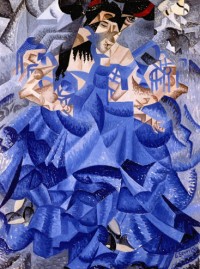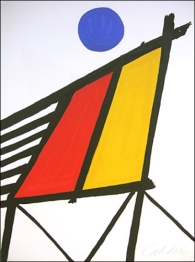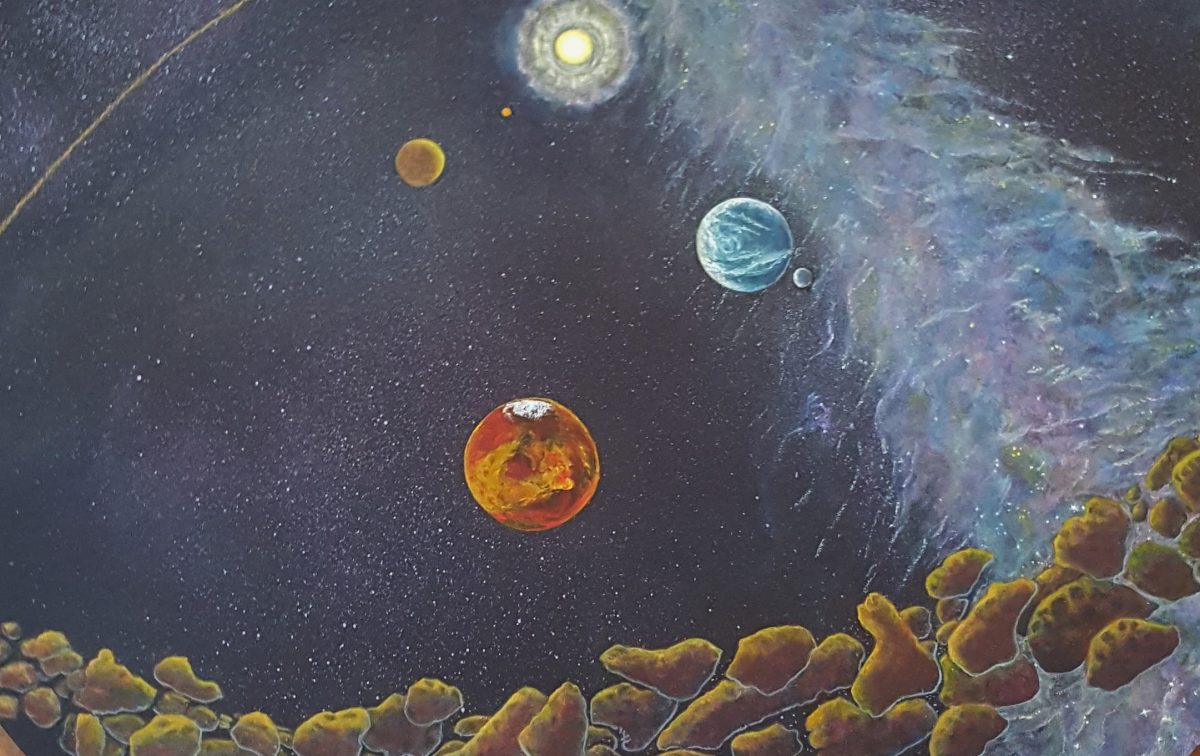The Futurists were all concerned with movement in art – real or implied. The 20th Century was seen as highly mobile, socially, on every level – activity, noise, vibrations in life. Manifestos were written 1909 and 1912 for Futurism, which closed in about 1920. Futurism is strongly related to Cubism and Divisionalism, and to the use of the camera.

Blue Dancer – Severini – 1912
It started in Italy in the cities of Milan and Turin, which were highly individualised in the turn of the century. There was an artistic revolt against the static nature of art – hung on a wall, stood on a pedestal. They wanted to replace that immobility with a reference to the movement and mechanism of their industrial cities.
They were very expressive, with an effort to be modern. They wished to show the beauty of movement, of speed, the excitement in crowds, trains rolling and puffing steam, generating vibrations of movement and excitement. They wished to show the beauty of the labour of men, plus the pleasure of the sense of rebellion, and the joy about the various revolutions going on in Art.

The Cyclist – Natalia Goncharova – 1913
Futurism was an attempt to bring art to the machine age, trying to express artistically man’s movement through time and space, and the mechanics of the age. They were influenced by Seurat and Divisionalism. They saw the inter-relation and inter-reaction of planes of volume, of light and colour, of different view-points (the influence of Cubism), plus were influenced by the camera, the cinema, movies made by quickly flickering still photos. They superimposed shapes one over the other – Duchamp’s NUDE DESCENDING A STAIRCASE (movement through time and space).
Gino Severini was strongly influenced by Cubist theories. He created movement with the colour. The Futurists emphasised lines of force to create a sense of after-image. Giacomo Balla depicted speed itself – he was interested in the movement of the dog, rather than the image of the dog. Umberto Boccioni talked about modernism, but his works were based on traditional means.
,_Albright-Knox_Art_Gallery.jpg)
Dynamism of a Dog on a Leash – Balla
They called themselves Futurists because they wanted to create art for the future – man’s transience in nature, importance of machinery in man’s life – to become more animated, more automotive. Some of their subjects were: cars, trains, busy streets, bicycles, automobiles, a cascade of people. Their titles usually included words like: speed, force, dynamism – to express the idea of movement itself. Futurists influenced others in their era, with an ideal to represent movement in art.
OPTICAL ART – KINETIC ART – was that which really produced movement in art, particularly in sculpture (Calder’s mobiles). It was art in motion, created with very modern materials: plastics, strobe-lights, machinery (whizz, pop, bang), and used sound and music. Their purpose was to produce an unlimited variation of pattern, and to produce an active response from the spectator. They definitely brought movement into art. (Brancusi’s FISH was a motorised sculpture on a pedestal).

The White Face – Calder – painted sheet metal, rod, wire.
Alexander Calder: an American, put his emphasis on mass, on movement in space, and airy light shapes. He created space, time and movement with his mobiles – Duchamp gave them the name, mobiles, Calder had called them Space-cages. He was an engineer and a blacksmith, and introduced sculpture that actually moved, via air currents, hand-cranking, or electrification. He was aware of welding techniques.
His shapes were often abstract, geometric, influenced by Miro, Arp, and Mondrian. From Mondrian he got the primary colours, from Arp the use of organic shapes, and from Miro the use of the surreal and whimsical. He used modern materials such as sheet metal, wire, and created special realms of fantasy and play, which we unique to humans. His work was considered Kinetic – it really moves (actual movement).

Eagle (Seattle) – Calder
Optical Art appears to move – is implied or simulated movement, based on the perception of the viewer. It gives the illusion of movement while the painting is actually static. Op Art continued the research of the Impressionists into light and colour. It leaves the world of nature to go into non-representational imagery. It is based on the unique manipulation of perspective and colour relationships. They wanted to explore the possibility of human perception, of looking at the psychological response to colour (Seurat and Kandinsky), and reactions to linear configurations (Seurat and Mondrian). They wanted to extend the visual sensations of sight and how we see things move. Op Art is Formal rather than expressive.


Painting – Calder – Screenprint
Victor Vasarely: was Hungarian, who activates the paintingg surface by meticulous manipulation of colour and shape in a Formal and technically expert way. He used geometric shapes, tonal balance, contrastinb colours, creating ambiguous directions in his work. He was considered the originator of OP ART. He created the illusions of tensions – animated stillness.


OP ART – Vasarely – Sign sculpture (Hungary)
Jacob (Yaakov) Agam: developed art which the spectator had to move around, to shift their viewpoints, to create a continual change (virtual movement by viewer).
Bridget Riley: was British and the sensation of the 60’s. She analysed Pointillism, bent-line perspective, positive force, violent turbulence, and the illusions created by these. She worked out the designs on small pieces of paper, then when it worked she transferred the design onto the large canvas, and her assistants painted it with her carefully mixed colours.


Dizengoff Square Fountain – Agam; Bridget Riley in front of her work 1968
NB: If you choose to quote from this blog please cite its URL in your Bibliography.
Jud House 6/10/2016
. . . . .
